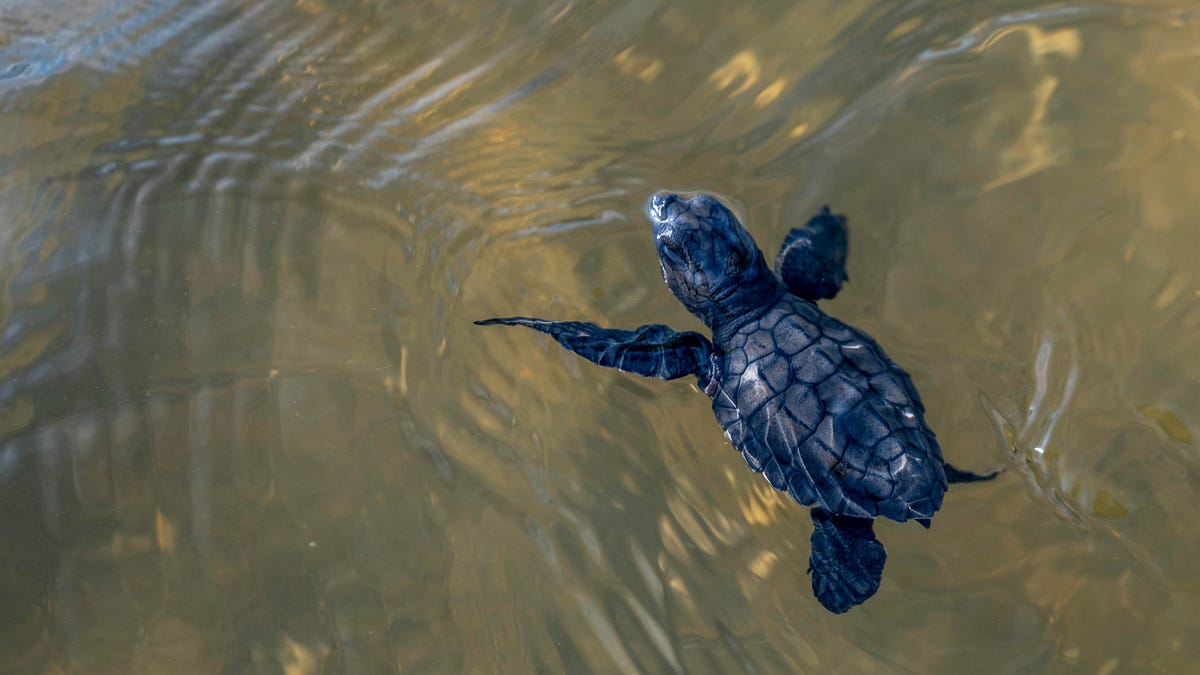Baby turtles are gobbling up plastic garbage at an alarming rate
Study shows juvenile turtles from the Pacific Ocean are particularly hard hit by human pollution.

Plastics are causing damage to baby marine turtles, a new study warns.
Plastics now make up 80% of marine debris, and they're not just found floating in the sea. A new study published in Frontiers in Marine Science reveals baby marine turtles from the Indian Ocean and Pacific Ocean have a very high incidence of plastic ingestion, which can lead to malnutrition, chemical contamination and death when the plastics lacerate, obstruct or perforate the turtles' gastrointestinal tracts.
"Small juvenile turtles (including post-hatchling and oceanic juveniles) are thought to be most at risk, due to feeding preferences and overlap with areas of high plastic abundance," the study reports.
Researchers examined the stomach contents of specimens from five different species of sea turtles.
The turtles evolved to develop out in the open ocean, where they can avoid most predators, but those areas are quickly turning into prime venues for the plastic litter to collect. This is an example of an evolutionary trap, the report notes.
"Post-hatchlings occupy habitats that in the past were ideal locations for growth, however, these are now accumulating high abundances of plastic debris; potentially lowering survivorship and causing sub-lethal impacts on growth and maturity," the report says. "This life stage has the potential for being 'trapped' by their past evolutionary responses to develop in what are now some of the most polluted areas of the global oceans."
The Pacific Ocean turtles were found to have ingested plastic in much higher proportion than the Indian Ocean turtles: 86% of loggerhead turtles found in the Pacific had ingested plastic, and 80% of flatback and green sea turtles had done so. And the plastic came from different places.
"Plastic in the Pacific turtles was mostly hard fragments, which could come from a vast range of products used by humans, while Indian Ocean plastics were mostly fibers -- possibly from fishing ropes or nets," the study's lead author, Emily Duncan of the University of Exeter, said in a statement.
Duncan said the humans must take action to mitigate and prevent plastic pollution, and the next research stage will investigate how eating the plastic affects turtles' health and survival.

